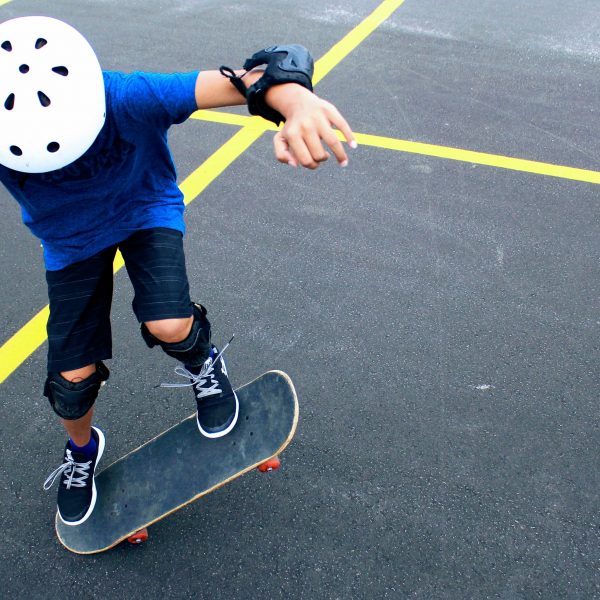Risk assessment in a family day care context: It’s everyone’s business

Approved family day care (FDC) provider Sharyn Flynn recently appeared in a Queensland Department of Education video Risk Assessment and Management and has shared her perspectives on risk assessment and management in a follow up article.
Risk assessment and management, she said, is a key control system for approved providers seeking to ensure safe environments for children and staff.
Taking time every day to identify, assess, control and continuously monitor risks is vital to preventing harm and ensuring children’s health, safety and wellbeing.
While the video is specific to an FDC setting, the advice and tips are applicable across all early childhood settings, on building a culture of effective risk management.
Ms Flynn is the approved provider of Brisbane’s Kids At Home FDC, and says risk assessment is continual, and something that is part of what educators and staff do every day.
“We eat, live and breathe it,” she said. “It’s just something that’s always there.
“As a provider it’s my responsibility to ensure that everybody knows what their role is, that they understand the legislation, and they understand how to implement it.”
Daily safety checks and risk mitigation
For FDC educator Rebecca Wild, ongoing risk assessment of premises and equipment is important because families trust educators with their children and want them to come home safely.
Ms Wild and fellow Kids At Home educator Natalie Lawrence use a safety checklist based on ACECQA’s risk assessment and management tool to identify and manage hazards indoors and outdoors that may injure a child.
Some aspects of risk assessment in an FDC setting includes:
- Kitchen knives are put away
- Medication is out of reach
- Socket covers are in power points
- Cupboard doors and drawers are locked
- Barbecue covered, and gas bottles disconnected and locked in shed
- Shed door is locked
- Pool gates are shut
- Trampoline legs are stable and net free from holes or tears
- Swing set is in good repair and ground underneath is clear of hazards
- Sandpit and mud kitchen is clear of sharp objects and animal faeces.
“When I identify the risks, I write up the risk assessment, identify how to mitigate those risks and then send that form to the office for advice and sign off,” Ms Wild explained.
In this space, Coordinator April Eaton continued, it’s important to remember that children have a different physical perspective to adults.
“Because we’re taller, we’re looking at our eye level, and they’re looking at their eye level. We need to look from their perspective, see the small parts that look like something yummy that might get popped in (their mouth) and choked on,” she said.
“Each morning, our educators also look for these small parts.”
Outings and excursions
Ms Flynn said outings and excursions need particular consideration of risk because they are out of the children’s familiar environment.
“What happens if a car breaks down? What happens if there’s an accident on the road? Where will they park when they go to a venue? What other people are going to be in the environment?” – these are some of the questions which educators should consider when planning an outing outside the service.
“The legislation requires educators to have that risk management plan in place but it’s the service’s responsibility to ensure that it’s covering important aspects,” she said.
Ms Lawrence said that if she was taking children to a park, she would firstly consider the type of equipment, and then chat to others who have been to the same location, and gather their thoughts.
Finally, they would share and compare their risk assessments and, importantly, their control measures.
Medical conditions and allergies
Services also need to consider the risks associated with medical conditions and allergies with the child’s family at enrolment, and share that information with coordinators and educators.
“If I was to find out that one of our little ones had an allergy,” Ms Wild said, “I would make the rest of our families aware of that.”
“I would put a sign up on our wall. I would also obtain the action plan from the child’s doctor. Then that documentation would be forwarded to the office so they are also aware of the risks involved.”
With medical conditions and allergies, it is a three way partnership she continued.
“We all need to be on the same page to ensure the children’s safety.”
Risk management, she continued, is “definitely a mindset.”
Additional resources
A number of resources were suggested along with the original article including:
- Risk assessment and management tool
- Risk assessment and management (PDF, 497KB)
- Excursion risk assessment template (DOCX, 60KB)
- Providing a child safe environment (PDF, 253KB)
- Risk Assessment and management templates for excursions, transporting children, indoor and outdoor environment safety checklist.
- Risk assessment and management
- Stay safe this summer
Popular

Workforce
Quality
Research
When did it start to go wrong?
2025-12-18 08:00:46
by Fiona Alston

Quality
Practice
Research
Small ways to teach babies and toddlers body safety and consent in early learning
2025-12-15 08:00:40
by Fiona Alston

Quality
Research
Food safety in early learning centres: Protecting children through better practices
2025-12-15 07:45:24
by Contributed Content
















